Development of an ICE-Based Micro-CHP System Based on a Stirling Engine; Methodology for a Comparative Study of its Performance and Sensitivity Analysis in Recreational Sailing Boats in Different European Climates
Abstract
:1. Introduction
2. Materials and Methods
2.1. ICE Based Micro-CHP System
2.2. Recreational Sailing Boat
2.3. Environmental Conditions
2.4. Simulation Configuration
3. Results and Discussion
3.1. Experimental Results
3.2. Adequacy of the Micro-CHP Unit
3.3. Performance of the ICE-Based Micro-CHP Unit
3.4. Sensitivity Analysis
4. Conclusions
Acknowledgments
Author Contributions
Conflicts of Interest
Abbreviations
| ICE | Internal Combustion Engine |
| micro-CHP | micro Combined Heating and Power |
| SE | Stirling Engine |
| TES | Thermal Energy Storage |
| FEL | Following Electric Load |
| FTL | Following Thermal Load |
| PVC | Polyvinyl chloride |
| DHW | Domestic Hot Water |
| TMY | Typical Meteorological Year |
| NCAR | National Center for Atmospheric Research |
| SST | Sea Surface Temperature |
| netCFD | network Common Data Format |
References
- Chesi, A.; Ferrara, G.; Ferrari, L.; Magnani, S.; Tarani, F. Influence of the heat storage size on the plant performance in a Smart User case study. Appl. Energy 2013, 112, 1454–1465. [Google Scholar] [CrossRef]
- Barbieri, E.S.; Melino, F.; Morini, M. Influence of the thermal energy storage on the profitability of micro-CHP systems for residential building applications. Appl. Energy 2012, 97, 714–722. [Google Scholar] [CrossRef]
- Budzianowski, W.M. Negative net CO2 emissions from oxy-decarbonization of biogas to H2. Int. J. Chem. React. Eng. 2010, 8, 1542–6580. [Google Scholar] [CrossRef]
- Milewski, J.; Szabłowski, L.; Kuta, J. Control strategy for an Internal combustion engine fuelled by natural gas operating in distributed generation. Energy Procedia 2012, 14, 1478–1483. [Google Scholar] [CrossRef]
- Williams, M.C.; Strakey, J.P.; Singhal, S.C. U.S. distributed generation fuel cell program. J. Power Sources 2004, 131, 79–85. [Google Scholar] [CrossRef]
- Onovwiona, H.I.; Ugursal, V.I. Residential cogeneration systems: Review of the current technology. Renew. Sustain. Energy Rev. 2006, 10, 389–431. [Google Scholar] [CrossRef]
- Peacock, A.D.; Newborough, M. Impact of micro-combined heat-and-power systems on energy flows in the UK electricity supply industry. Energy 2006, 31, 1804–1818. [Google Scholar] [CrossRef]
- Kuhn, V.; Klemeš, J.; Bulatov, I. MicroCHP: Overview of selected technologies, products and field test results. Appl. Therm. Eng. 2008, 28, 2039–2048. [Google Scholar] [CrossRef]
- Roselli, C.; Sasso, M.; Sibilio, S.; Tzscheutschler, P. Experimental analysis of microcogenerators based on different prime movers. Energy Build. 2011, 43, 796–804. [Google Scholar] [CrossRef]
- Ghasemi, A.; Asrari, A.; Zarif, M.; Abdelwahed, S. Techno-economic analysis of stand-alone hybrid photovoltaic–diesel–battery systems for rural electrification in eastern part of Iran—A step toward sustainable rural development. Renew. Sustain. Energy Rev. 2013, 28, 456–462. [Google Scholar] [CrossRef]
- Bernal-Agustıín, J.L.; Dufo-López, R. Simulation and optimization of stand-alone hybrid renewable energy systems. Renew. Sustain. Energy Rev. 2009, 13, 2111–2118. [Google Scholar] [CrossRef]
- Karmacharya, S.; Putrus, G.; Underwood, C.P.; Mahkamov, K.; McDonald, S.; Alexakis, A. Simulation of energy use in buildings with multiple micro generators. Appl. Therm. Eng. 2014, 62, 581–592. [Google Scholar] [CrossRef]
- Brandoni, C.; Renzi, M.; Caresana, F.; Polonara, F. Simulation of hybrid renewable microgeneration systems for variable electricity prices. Appl. Therm. Eng. 2014, 71, 667–676. [Google Scholar] [CrossRef]
- Monteiro, E.; Moreira, N.A.; Ferreira, S. Planning of micro-combined heat and power system in the Portuguese scenario. Appl. Energy 2009, 86, 290–298. [Google Scholar] [CrossRef]
- Campos, A.C.; Erkoreka, A.; Escudero, K.M.; Sala, J.M. Feasibility of small-scale gas engine-based residential cogeneration in Spain. Energy Policy 2011, 39, 3813–3821. [Google Scholar] [CrossRef]
- Rosato, A.; Sibilio, S.; Ciampi, G. Energy, environmental and economic dynamic performance assessment of different micro-cogeneration systems in a residential application. Appl. Therm. Eng. 2013, 59, 599–617. [Google Scholar] [CrossRef]
- Xu, H.; Dang, Z.; Bai, B.F. Analysis of a 1 kW residential combined heating and power system based on solid oxide fuel cell. Appl. Therm. Eng. 2013, 50, 1101–1110. [Google Scholar] [CrossRef]
- Wang, H.; Jiao, W.; Lahdelma, R.; Zhu, C.; Zou, P. Stochastic multicriteria acceptability analysis for evaluation of combined heat and power units. Energies 2015, 8, 59–78. [Google Scholar] [CrossRef]
- Entchev, E.; Yang, L.; Szadkowski, F.; Armstrong, M.; Swinton, M. Application of hybrid micro-cogeneration system—Thermal and power energy solutions for Canadian residences. Energy Build. 2013, 60, 345–354. [Google Scholar] [CrossRef]
- Ehyaei, M.A.; Ahmadi, P.; Atabi, F.; Heibati, M.R.; Khorshidvand, M. Feasibility study of applying internal combustion engines in residential buildings by exergy, economic and environmental analysis. Energy Build. 2012, 55, 405–413. [Google Scholar] [CrossRef]
- Van Bael, J.; Six, D.; Vanhoudt, D.; Desmedt, J. Feasibility and potential of micro combined heat and power in Flanders. In Proceedings of the 2nd International Conference on Microgeneration and Related Technologies (MICROGEN II), Glasgow, UK, 4–6 April 2011.
- Alanne, K.; Söderholm, N.; Sirén, K.; Beausoleil-Morrison, I. Techno-economic assessment and optimization of Stirling engine micro-cogeneration systems in residential buildings. Energy Convers. Manag. 2010, 51, 2635–2646. [Google Scholar] [CrossRef]
- Magri, G.; Di Perna, C.; Serenelli, G. Analysis of electric and thermal seasonal performances of a residential microCHP unit. Appl. Therm. Eng. 2012, 36, 193–201. [Google Scholar] [CrossRef]
- Barbieri, E.S.; Spina, P.R.; Venturini, M. Analysis of innovative micro-CHP systems to meet household energy demands. Appl. Energy 2012, 97, 723–733. [Google Scholar] [CrossRef]
- Comodi, G.; Cioccolanti, L.; Renzi, M. Modelling the Italian household sector at the municipal scale: Micro-CHP, renewables and energy efficiency. Energy 2014, 68, 92–103. [Google Scholar] [CrossRef]
- Ren, H.; Gao, W.; Zhou, W.; Nakagami, K. Multi-criteria evaluation for the optimal adoption of distributed residential energy systems in Japan. Energy Policy 2009, 37, 5484–5493. [Google Scholar] [CrossRef]
- Pagliarini, G.; Rainieri, S. Modeling of a thermal energy storage system coupled with combined heat and power generation for the heating requirements of a university campus. Appl. Therm. Eng. 2010, 30, 1255–1261. [Google Scholar] [CrossRef]
- Campos Celador, A.; Odriozola, M.; Sala, J.M. Implications of the modelling of stratified hot water storage tanks in the simulation of CHP plants. Energy Convers. Manag. 2011, 52, 3018–3026. [Google Scholar] [CrossRef]
- Smith, A.D.; Mago, P.J.; Fumo, N. Benefits of thermal energy storage option combined with CHP system for different commercial building types. Sustain. Energy Technol. Assess. 2013, 1, 3–12. [Google Scholar] [CrossRef]
- Lozano, M.A.; Ramos, J.C.; Serra, L.M. Cost optimization of the design of CHCP (combined heat, cooling and power) systems under legal constraints. Energy 2010, 35, 794–805. [Google Scholar] [CrossRef]
- TeymouriHamzehkolaei, F.; Sattari, S. Technical and economic feasibility study of using Micro CHP in the different climate zones of Iran. Energy 2011, 36, 4790–4798. [Google Scholar] [CrossRef]
- Stathopoulos, P.; Paschereit, C.O. Retrofitting micro gas turbines for wet operation. A way to increase operational flexibility in distributed CHP plants. Appl. Energy 2015, 154, 438–446. [Google Scholar] [CrossRef]
- Merkel, E.; McKenna, R.; Fichtner, W. Optimisation of the capacity and the dispatch of decentralised micro-CHP systems: A case study for the UK. Appl. Energy 2015, 140, 120–134. [Google Scholar] [CrossRef]
- Ren, H.; Gao, W. Economic and environmental evaluation of micro CHP systems with different operating modes for residential buildings in Japan. Energy Build. 2010, 42, 853–861. [Google Scholar] [CrossRef]
- Camporeale, S.M.; Fortunato, B.; Torresi, M.; Turi, F.; Pantaleo, A.M.; Pellerano, A. Part load performance and operating strategies of a natural gas—biomass dual fueled microturbine for combined heat and power generation. J. Eng. Gas Turbines Power 2015, 137. [Google Scholar] [CrossRef]
- Mago, P.J.; Fumo, N.; Chamra, L.M. Performance analysis of CCHP and CHP systems operating following the thermal and electric load. Int. J. Energy Res. 2009, 33, 852–864. [Google Scholar] [CrossRef]
- Ulloa, C.; Porteiro, J.; Eguía, P.; Pousada-Carballo, J.M. Application model for a Stirling Engine micro-generation system in caravans in different European locations. Energies 2013, 6, 717–732. [Google Scholar] [CrossRef]
- Ulloa, C.; Eguía, P.; Míguez, J.L.; Porteiro, J.; Pousada-Carballo, J.M.; Cacabelos, A. Feasibility of using a Stirling engine-based micro-CHP to provide heat and electricity to a recreational sailing boat in different European ports. Appl. Therm. Eng. 2013, 59, 414–424. [Google Scholar] [CrossRef]
- Grljusic, M.; Medica, V.; Radica, G. Calculation of efficiencies of a ship power plant operating with waste heat recovery through combined heat and power production. Energies 2015, 8, 4273–4299. [Google Scholar] [CrossRef]
- Grljusic, M.; Medica, V.; Racic, N. Thermodynamic analysis of a ship power plant operating with waste heat recovery through combined heat and power production. Energies 2014, 7, 7368–7394. [Google Scholar] [CrossRef]
- Zago, M.; Casalegno, A.; Marchesi, R.; Rinaldi, F. Efficiency analysis of independent and centralized heating systems for residential buildings in northern Italy. Energies 2011, 4, 2115–2131. [Google Scholar] [CrossRef]
- Campos-Celador, A.; Pérez-Iribarren, E.; Sala, J.M.; Portillo-Valdés, L.A. Thermoeconomic analysis of a micro-CHP installation in a tertiary sector building through dynamic simulation. Energy 2012, 45, 228–236. [Google Scholar] [CrossRef]
- González-Pino, I.; Campos-Celador, A.; Pérez-Iribarren, E.; Terés-Zubiaga, J. Parametric study of the operational and economic feasibility of Stirling micro-cogeneration devices in Spain. Appl. Therm. Eng. 2014, 71, 821–829. [Google Scholar] [CrossRef]
- Battista, G.; Evangelisti, L.; Guattari, C.; Basilicata, C.; Vollaro, R.L. Buildings energy efficiency: Interventions analysis under a Smart Cities approach. Sustainability 2014, 6, 4694–4705. [Google Scholar] [CrossRef]
- Meteonorm Web Site. Available online: http://meteonorm.com/ (accessed on 15 October 2015).
- The National Center for Atmospheric Research Web Site. Available online: http://ncar.ucar.edu/ (accessed on 15 October 2015).
- Ebrahimpour, A.; Maerefat, M. A method for generation of typical meteorological year. Energy Convers. Manag. 2010, 51, 410–417. [Google Scholar] [CrossRef]
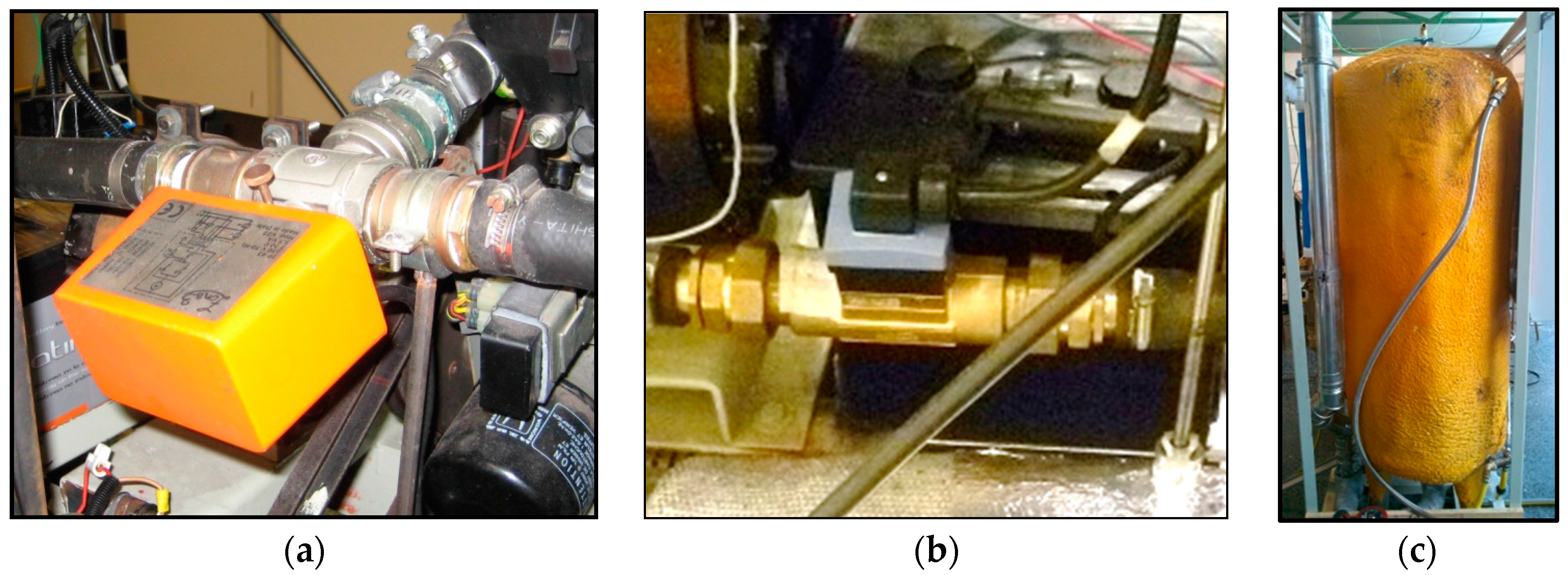
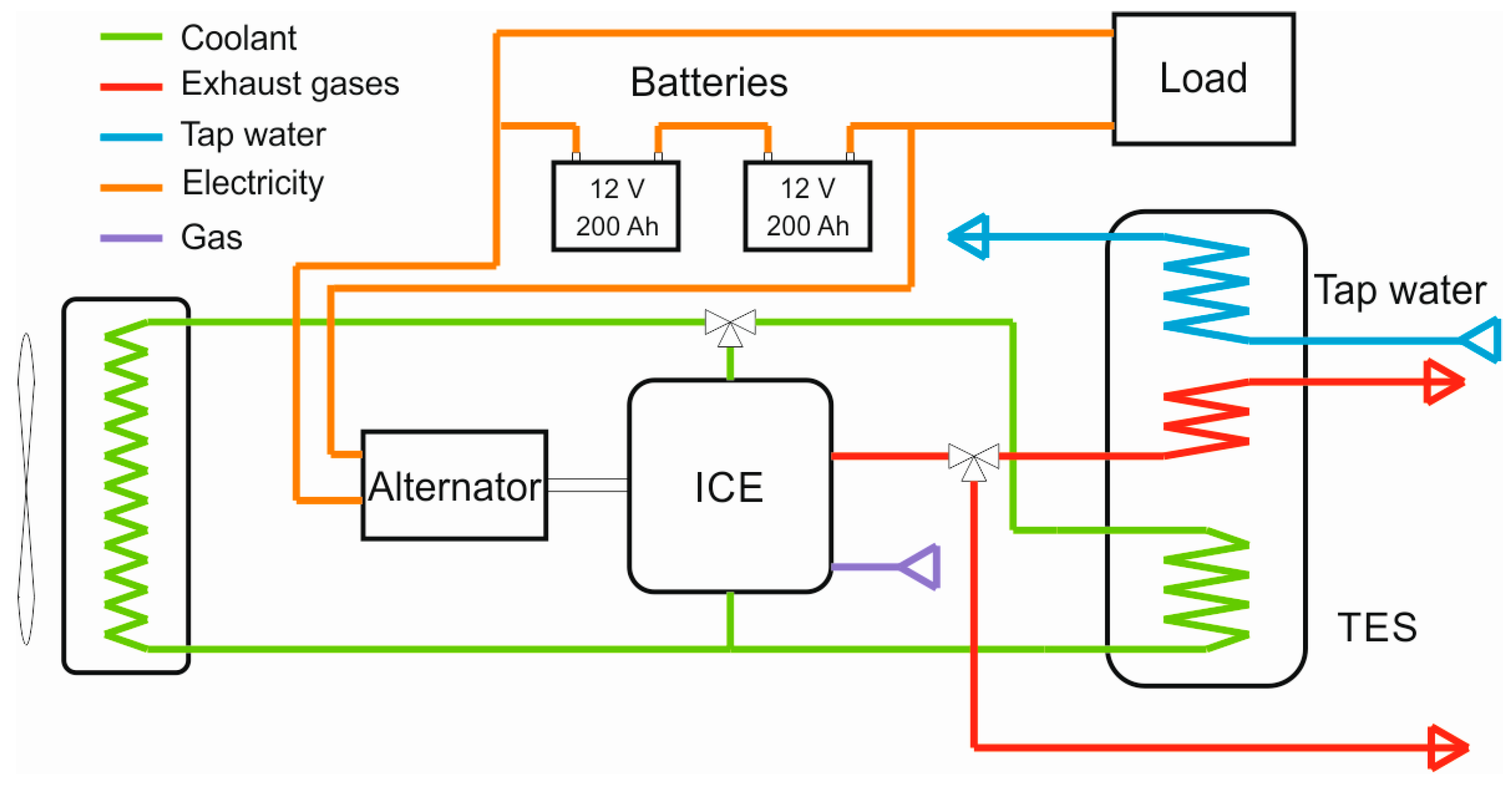
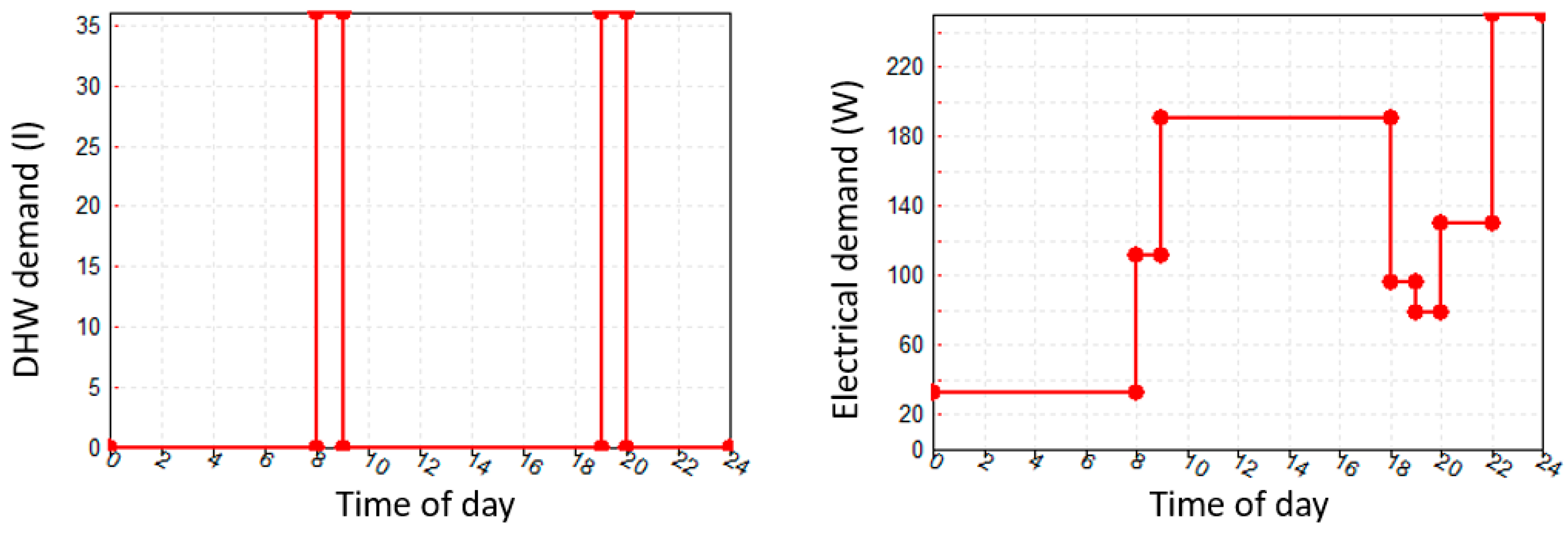
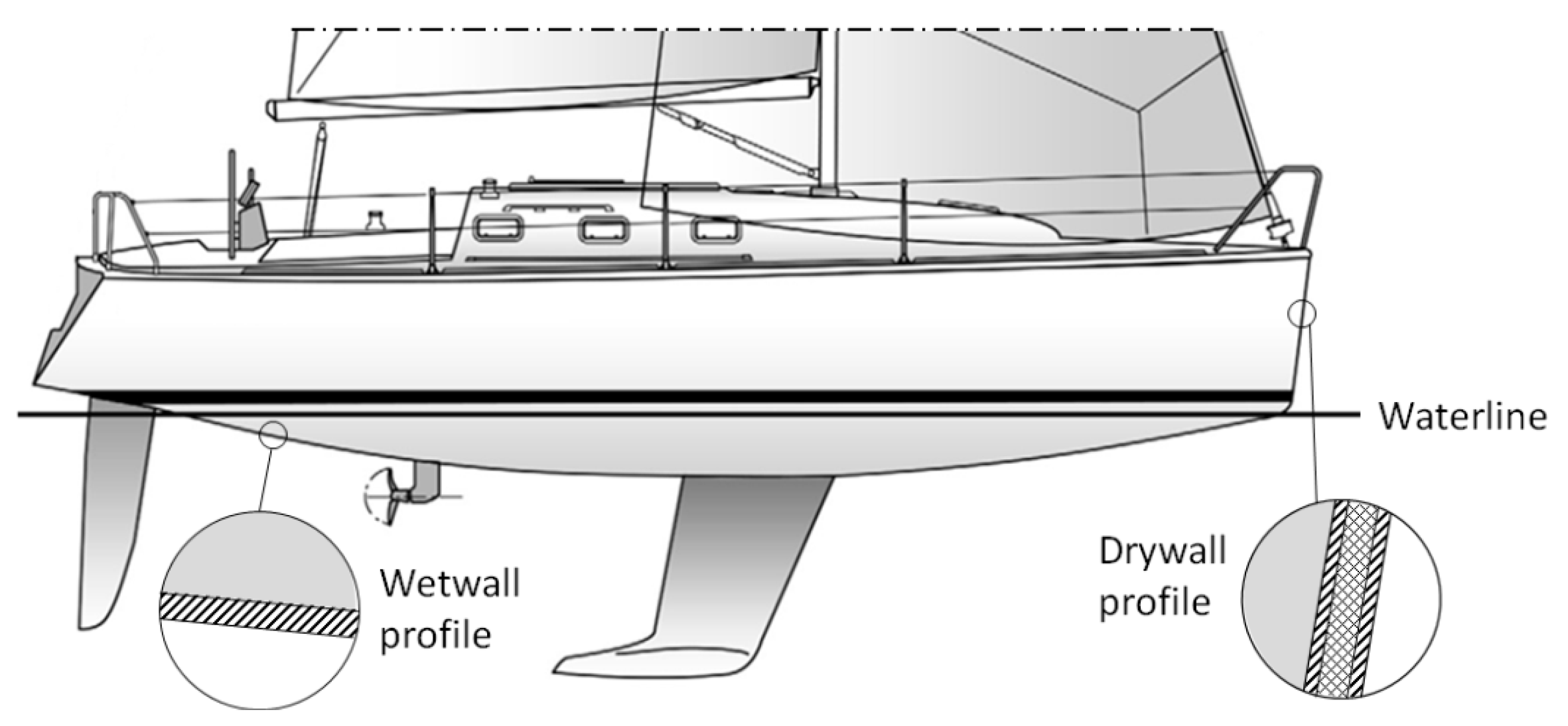

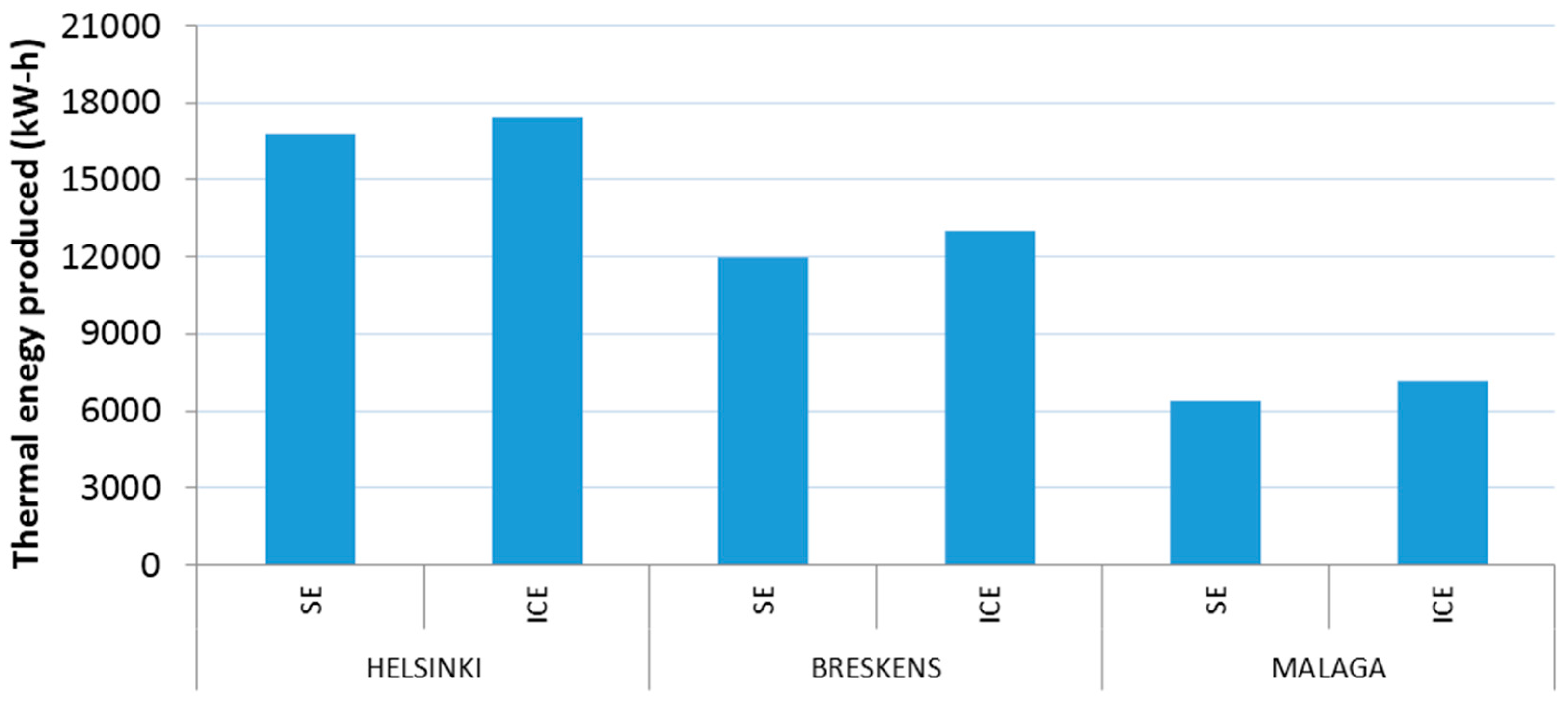
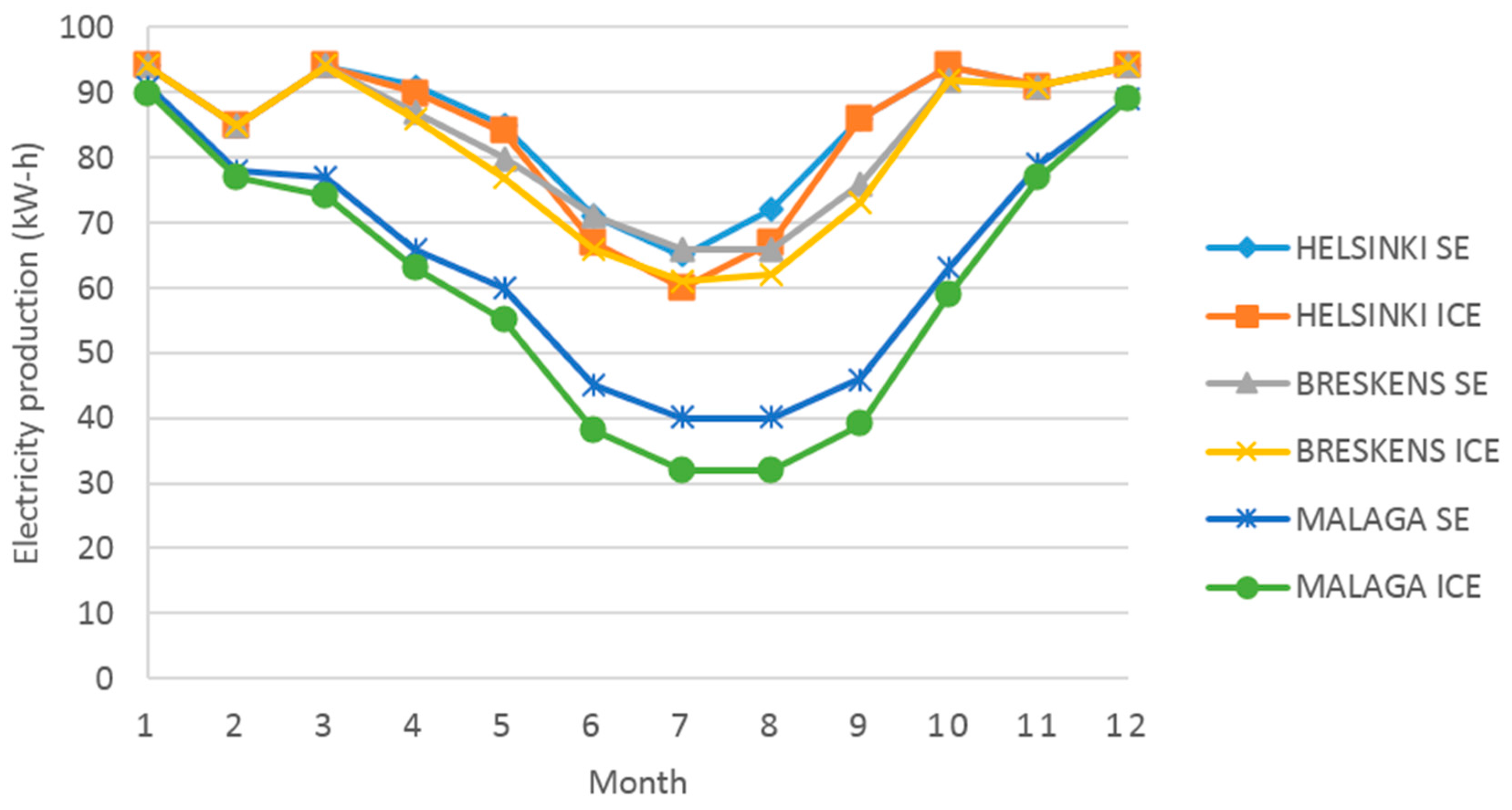
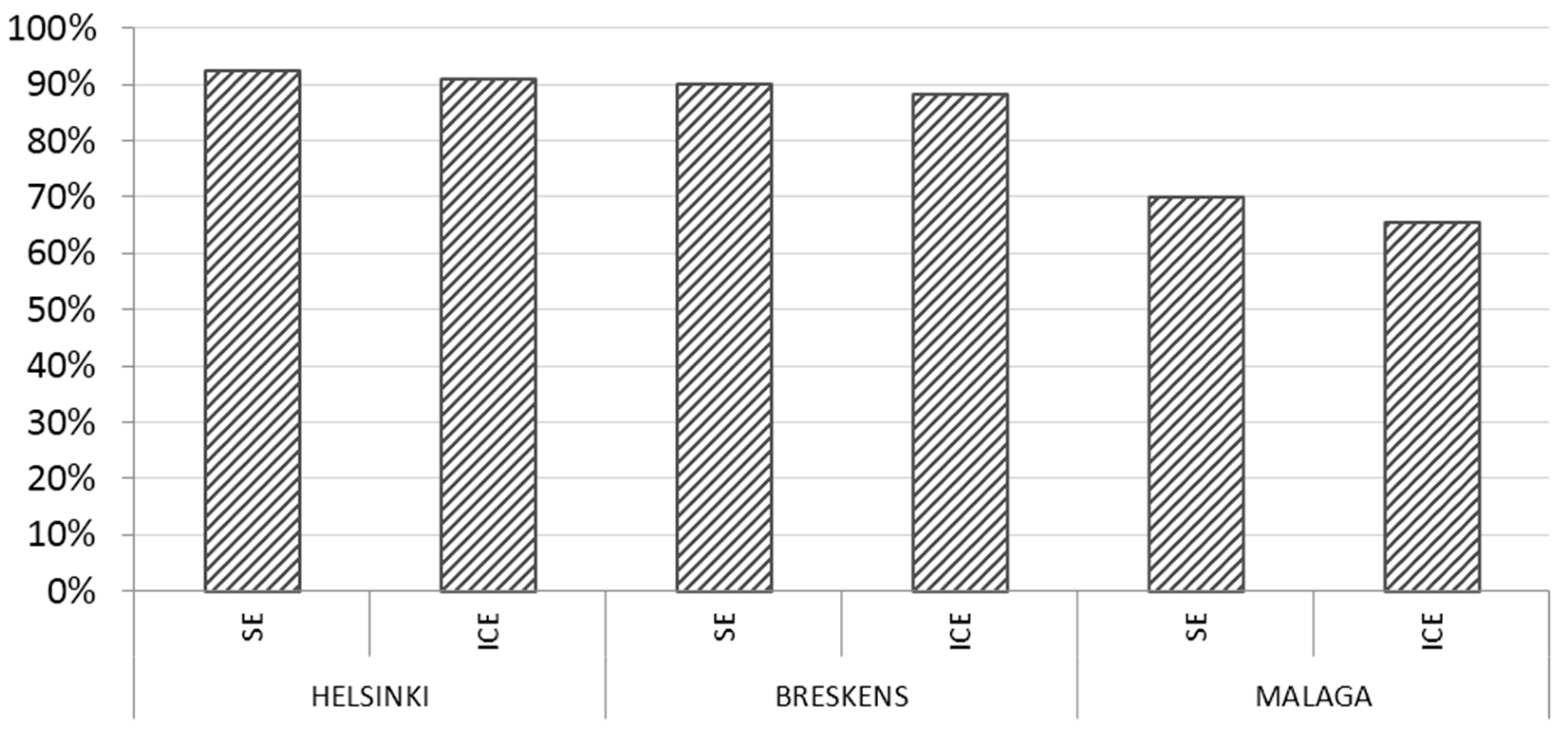
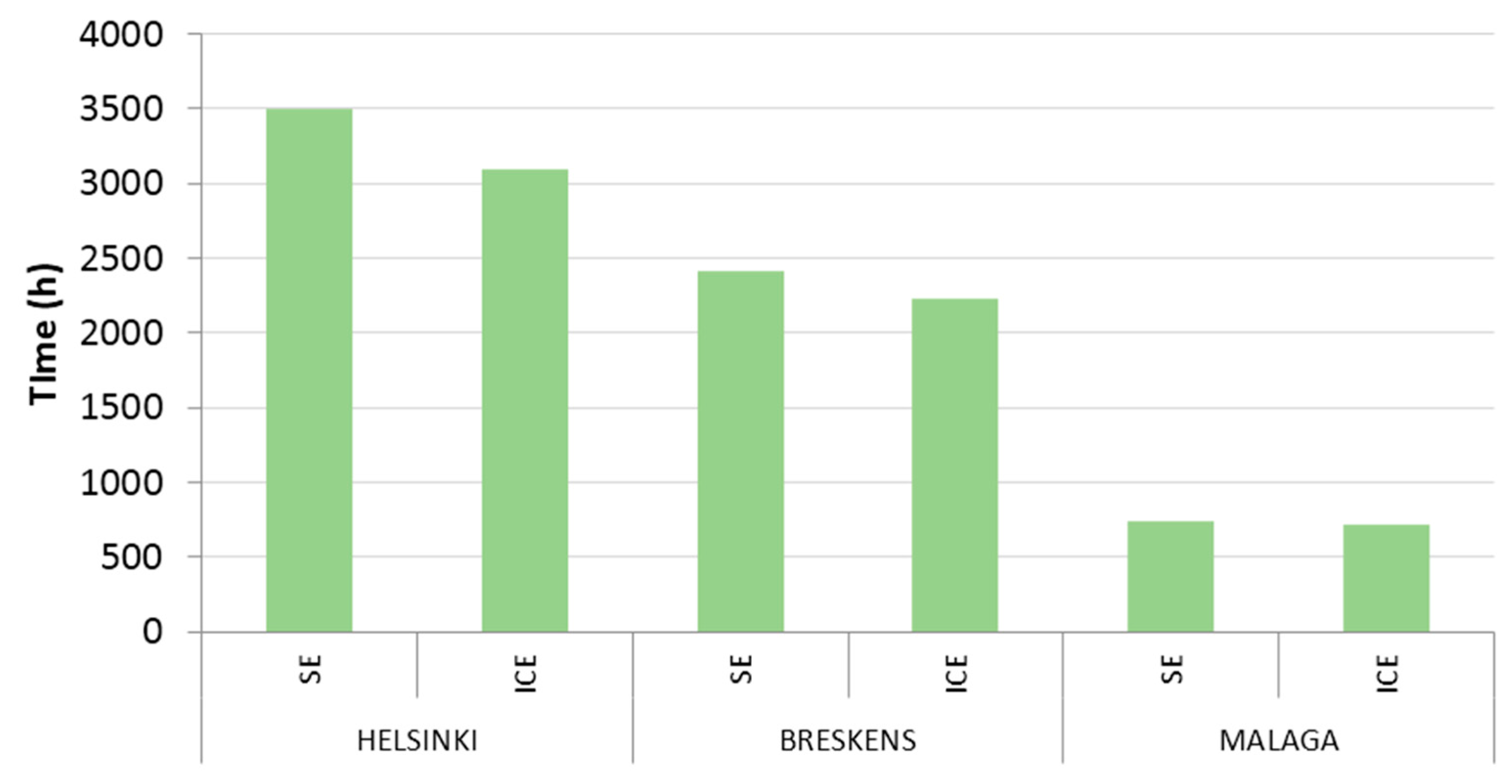
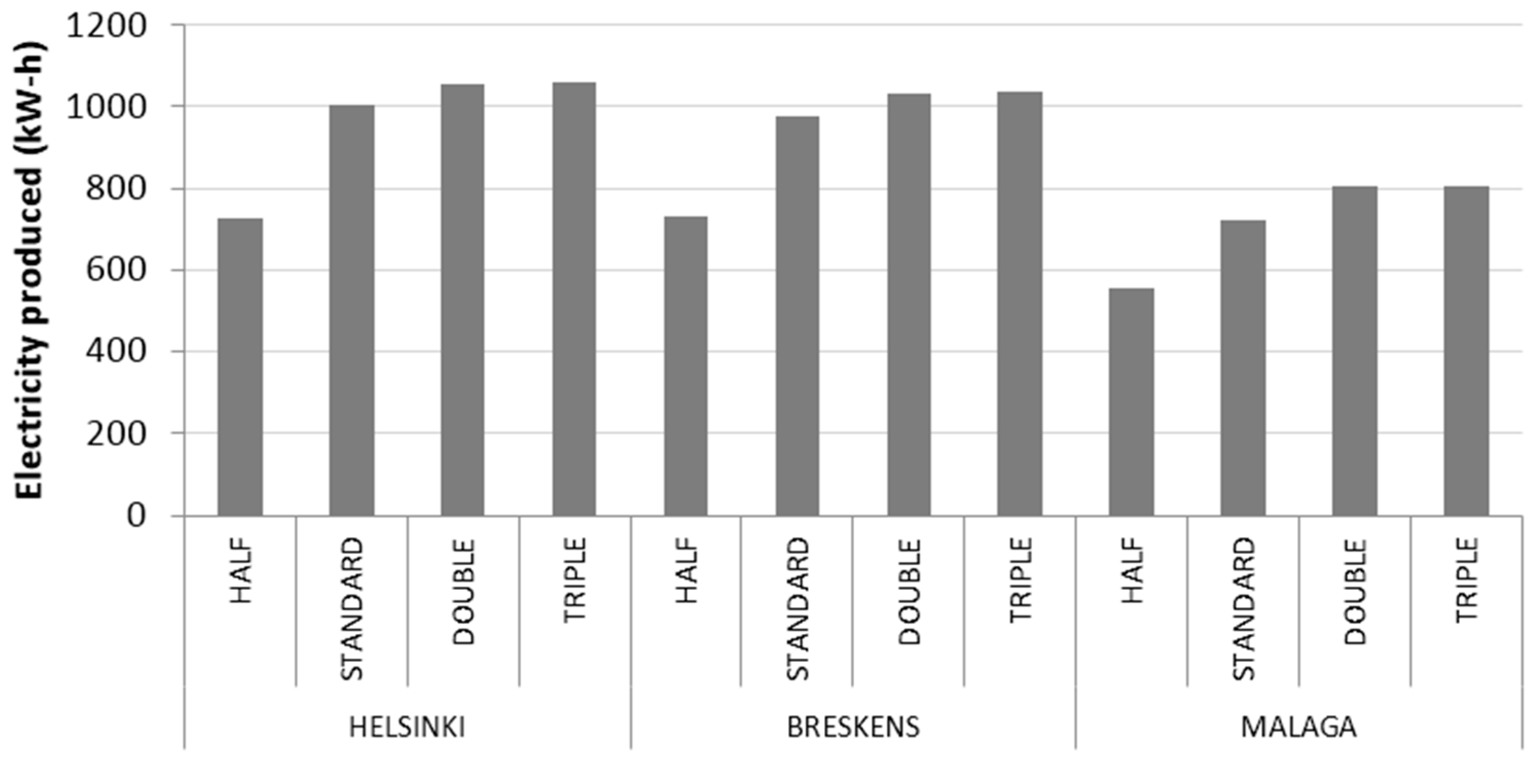

| Envelope Layers | Wetwall | Drywall | ||
|---|---|---|---|---|
| Fiberglass | Outer Fiberglass | Polyvinyl chloride (PVC) | Inner Fiberglass | |
| Thickness [mm] | 13 | 10 | 20 | 10 |
| Thermal Conductivity [W/m·K] | 0.04 | 0.04 | 0.23 | 0.04 |
| Capacity [kJ/kg·K] | 0.84 | 0.84 | 1 | 0.84 |
| Density [kg/m3] | 12 | 12 | 1500 | 12 |
| Engine Speed (rpm) | Electric Power (kW) | Heating Power (kW) |
|---|---|---|
| 2100 | 0.556 | 2.382 |
| 2900 | 0.610 | 4.747 |
| 3500 | 0.653 | 5.414 |
| Climate | City | Peak Heat Demand (kW) | Month of Peak Heat Demand | Day of Peak Heat Demand | Time of Peak Heat Demand | Air Temperature (°C) | SST (°C) |
|---|---|---|---|---|---|---|---|
| Northern European Atlantic | HELSINKI | 4.35 | 2 | 15 | 8:06 | −21.9 | 0.7 |
| Southern European Atlantic | BRESKENS | 2.61 | 1 | 12 | 21:06 | −4.5 | 7.4 |
| Mediterranean | MALAGA | 1.72 | 1 | 12 | 9:00 | 4.0 | 15.5 |
© 2016 by the authors; licensee MDPI, Basel, Switzerland. This article is an open access article distributed under the terms and conditions of the Creative Commons by Attribution (CC-BY) license (http://creativecommons.org/licenses/by/4.0/).
Share and Cite
Rey, G.; Ulloa, C.; Míguez, J.L.; Arce, E. Development of an ICE-Based Micro-CHP System Based on a Stirling Engine; Methodology for a Comparative Study of its Performance and Sensitivity Analysis in Recreational Sailing Boats in Different European Climates. Energies 2016, 9, 239. https://doi.org/10.3390/en9040239
Rey G, Ulloa C, Míguez JL, Arce E. Development of an ICE-Based Micro-CHP System Based on a Stirling Engine; Methodology for a Comparative Study of its Performance and Sensitivity Analysis in Recreational Sailing Boats in Different European Climates. Energies. 2016; 9(4):239. https://doi.org/10.3390/en9040239
Chicago/Turabian StyleRey, Guillermo, Carlos Ulloa, Jose Luis Míguez, and Elena Arce. 2016. "Development of an ICE-Based Micro-CHP System Based on a Stirling Engine; Methodology for a Comparative Study of its Performance and Sensitivity Analysis in Recreational Sailing Boats in Different European Climates" Energies 9, no. 4: 239. https://doi.org/10.3390/en9040239







